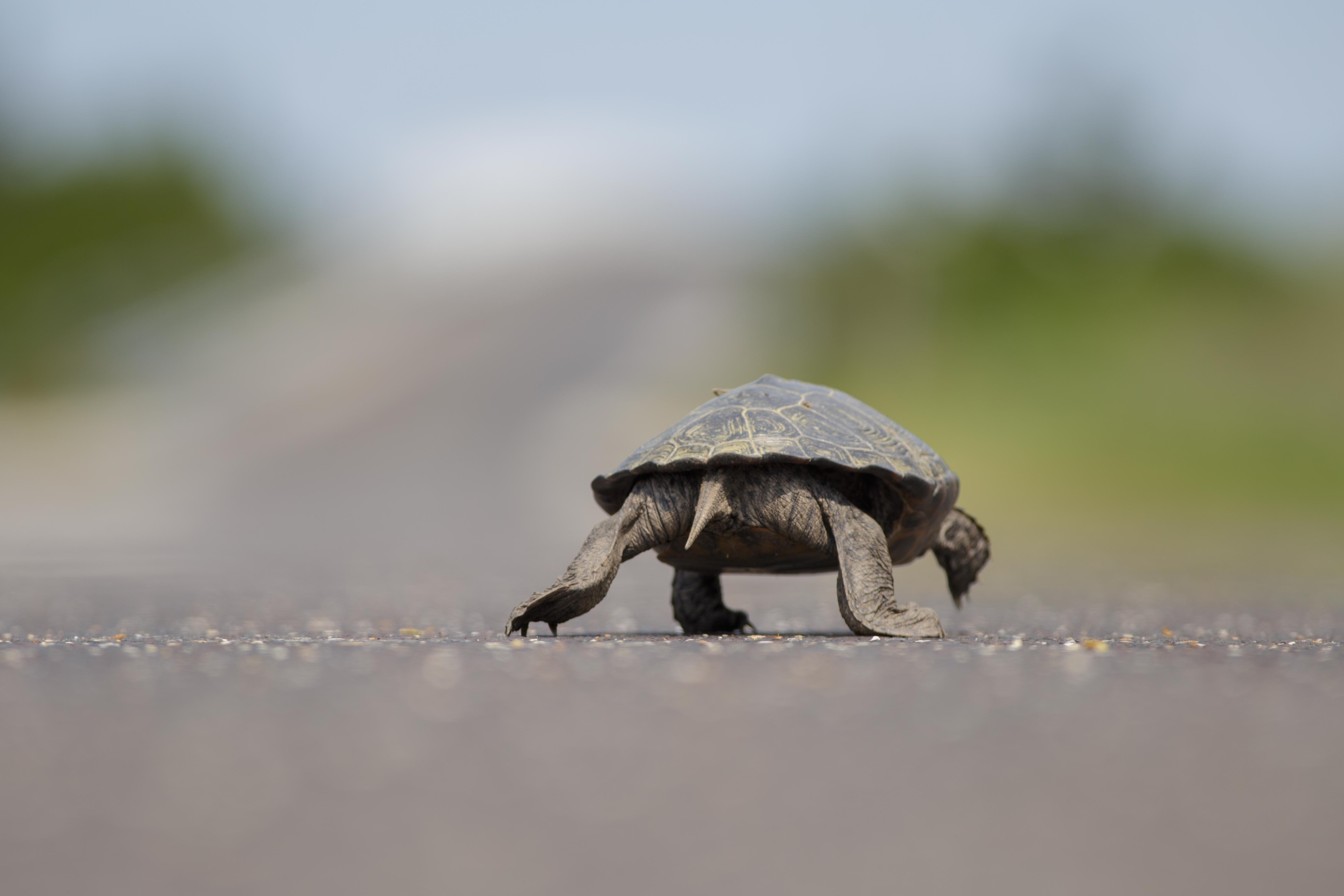‘Be Terrapin Aware’: Watch out for turtles crossing roads during nesting season

A northern diamondback terrapin crossing a southern Jersey Shore road on Wednesday. (Image courtesy of Ben Wurst/Conserve Wildlife Foundation of New Jersey)
Why did the turtle cross the road?
To lay eggs, of course.
It’s now the beginning of the annual nesting season for northern diamondback terrapins, the only species of turtle that inhabits the New Jersey coastal estuaries year round, according to Ben Wurst, Habitat Program Manager for Conserve Wildlife Foundation of NJ.
Living exclusively in brackish water, adult females emerge from the protection of their aquatic habitat to find suitable areas to lay eggs, seeking nesting areas with a sandy gravel type substrate above the high tide line, Wurst said.
And that’s where the trouble begins.
“Throughout their range along the coast terrapins face a variety of threats to their survival,” he said, citing a loss of nesting habitat due to commercial and residential development, shoreline hardening, and flooding.
In turn, the loss of habitat in the marsh systems increase the risk of terrapin mortality as they search for adequate nesting areas.
“Terrapins will utilize roadsides for nesting which increases the threat of being hit by motor vehicles,” Wurst said. “Roads are essential to our daily life, but they often are barriers to wildlife, especially small critters like terrapins. Studies have shown that adult females have become less abundant and smaller from road mortality.”
But there are several ways to help.
He suggests that drivers in coastal areas “Be Terrapin Aware” until mid-July, a simple way to avoid striking a turtle in search of a nesting area.
“Terrapins are a great example of a small behavioral change in people — in this case, driving with more awareness on our coastal roads — making a huge difference for an at-risk wildlife species,” said Conserve Wildlife Foundation of New Jersey Executive Director David Wheeler.
If you find a terrapin crossing the road, Wurst offers these steps to help it cross safely:
Stay safe. Never put yourself at risk. Make sure that you do not endanger yourself, or others, by walking into traffic.
When safe to do so, pull your car over onto the shoulder. Turn on your hazard signals.
When safe to enter the roadway, approach the turtle and pick it up by grabbing its shell with both hands between its front and hind legs. HOLD ON. Terrapins have strong legs!
It is important that you move the turtle in the direction that it is heading. They are not always headed directly towards water. They will turn around if you put them in the wrong direction, so work with their instincts.
Place the terrapin off the road onto the soft shoulder (dirt or grass).
If you have a GPS or a smartphone, record your location and submit your sighting on our website: http://www.conservewildlifenj.org/protecting/projects/terrapin/terrapinsighting/.
Please to not move a terrapin long distances to “somewhere safe!” They have very small home ranges and moving them will only hurt them.
“Rescuing a live terrapin (or any other turtle) from the road is a rewarding experience,” the habitat program manager said. “It’s a great way to engage future generations in caring for our terrapins.”
For more information about terrapins and the work being done statewide by Conserve Wildlife Foundation of NJ, please visit: http://www.conservewildlifenj.org/protecting/projects/terrapin/.
WHYY is your source for fact-based, in-depth journalism and information. As a nonprofit organization, we rely on financial support from readers like you. Please give today.

